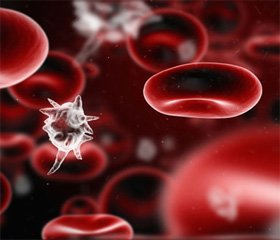Журнал «Медицина неотложных состояний» 2 (65) 2015
Вернуться к номеру
Assessment of severe sepsis and septic shock using Sepsis Severity Score
Авторы: L. A.Maltseva, N. V.Mosencev, V. N.Lisnucha, D .V.Bazylenko - SE “Dnipropetrovsk medical academy of Health Ministry of Ukraine”
Рубрики: Медицина неотложных состояний
Разделы: Справочник специалиста
Версия для печати
severe sepsis, septic shock, Sepsis Severity Score.
Summary.The purpose of this study is to assess the severity of the condition and prognosis outcome in severe sepsis and septic shock by using scale SepsisSeverityScore (SSS). We performed a retrospective analysis of 50 case histories of patients with severe sepsis and septic shock who were treated in the intensive care unit sepsis in 2013-2014. Assessment of the status and outcome of the disease addition to the classic criteria included the use of scales SSS.
Indications for hospitalization of patients in the intensive care unit for sepsis are manifestations of systemic inflammatory response syndrome plus septic focus, available or perceived. At admission manifestations of systemic inflammatory response syndrome (two or more symptoms) occurred in 86.94% of cases. Septic pathology character can be represented as follows: necrotic pancreatitis - 22.5%, gangrene of the lower extremities - 15%, nosocomialpneumonia - 10%, peritonitis - 10%, osteomyelitis mandible - 10%, boil perineum - 7.5% paraproctitis - 5%, phlegmon floor of the mouth- 5%, over - and subhepatic abscesses - 5%, other lesions - 12% .Wallpaper issues of diagnosis and intensive care for sepsis were conducted on the basis of the International Guidelines for Intensive Care of Severe Sepsis and Septic Shock: 2012.
In accordance with the scale of SSS, cardio - vascular failure in admission was registered in 74% of cases, in 68% there was no reaction to the liquid resuscitation. Administered>20 ml /kg of 50%, <20 mL/kg in 18% of cases. Liquid resuscitation of 49% required by vasopressor therapy, including 1 vasopressor administered in 80% and 2 vasopressor administered in 20% of those who were administered vasopressors. In 69.4% lactate levels was >4 mmol/L. In our study, cardiovascular failure with elevated lactate, despite the record liquid resuscitation crystalloid, colloid, vasopressor therapy, corticosteroids was not accompanied by adequate physiological response to the intensive care.
Respiratory insufficiency at baseline occurred in 76% of cases, on MLV were 41% of all patients and 54% of patients admitted to hospital with acute respiratory failure(ARF); SaO2<95% occurred in 18% of the total patients and 23% of casesofARF; FiO2 of 1.0 was required in 12% of the total patients and 15% of patients withARF.
Renal failure at admission occurred in 65% of cases, the concentration of creatinine above the upper normalvalues at 203.15%. Hepatic failure occurred initially in 35% of cases, the concentration of total bilirubin was higher by 112.4%.
In the analysis of glycemia found that blood glucose <2.2 mmol/l observed in 12%,>10 mmol/L in 41% of patients, of which 89% of patients had diabetes mellitus type II. Wherein hyperglycemia may indicate a normal reaction to stress.
Chills or shivering initially occurred in 6% of cases, medication sleep in 12% of cases.
Initially GCS15 balls (clear conscience) were in 29%, GCS 13balls(light stun) - 18%, - 18%, GCS 8balls(moderate coma) - 12% and GCS 4balls(deep coma) - 6% of patients.
In this way on admission to the intensive care unit for sepsis patients studied were in multiple organ dysfunction syndrome. The most characteristic of its components were cardiovascular, respiratory, renal and hepatic insufficiency. The situation was aggravated by severe concomitant diseases and the fact that the average age of over 60 years of study, 54% of patients had some degree of impaired consciousness. Consequently, in all cases, initially occurred failure are four systems that SSS scale predicted probability of death and the final result was confirmed.

